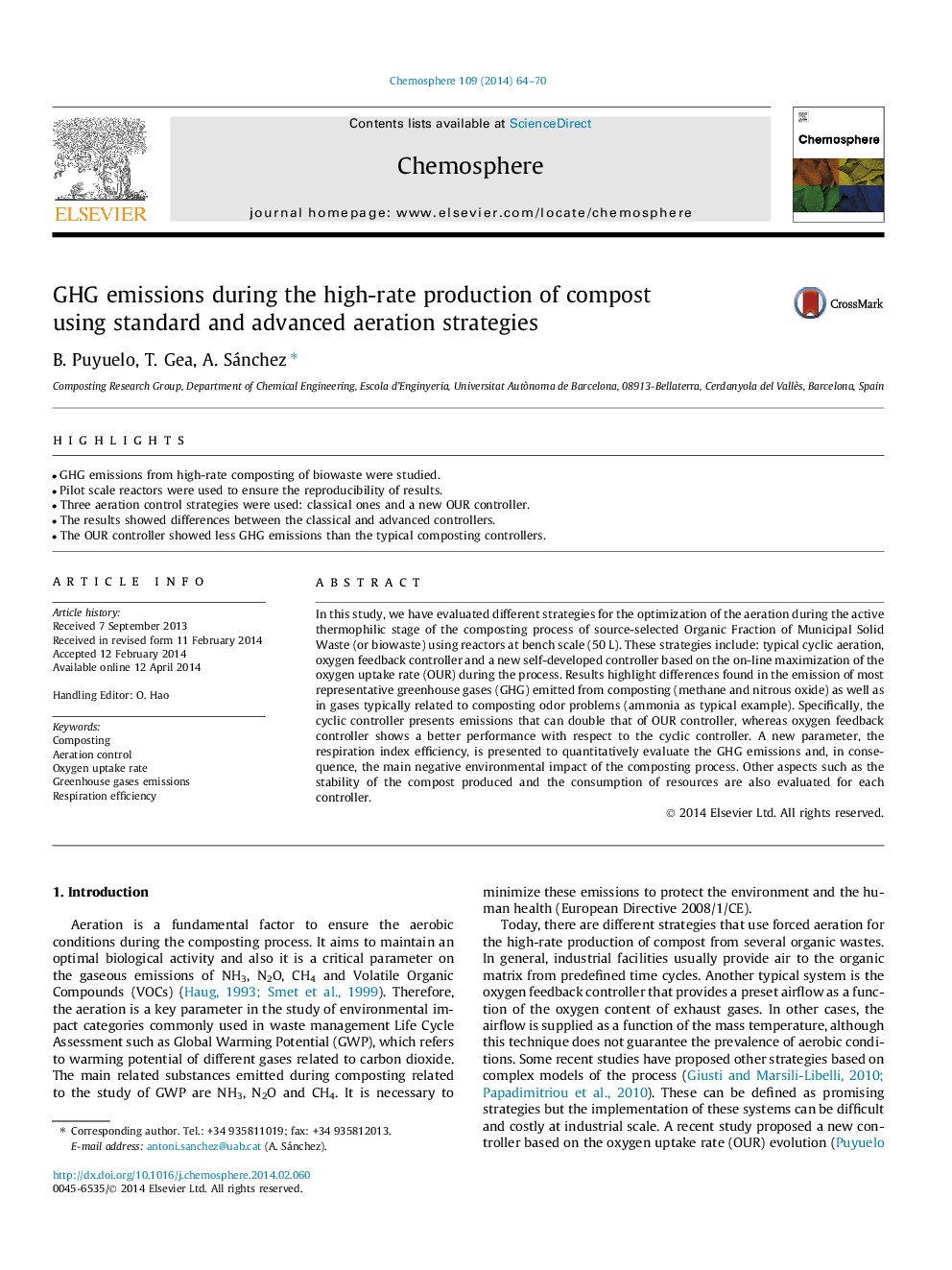| Article ID | Journal | Published Year | Pages | File Type |
|---|---|---|---|---|
| 6309016 | Chemosphere | 2014 | 7 Pages |
â¢GHG emissions from high-rate composting of biowaste were studied.â¢Pilot scale reactors were used to ensure the reproducibility of results.â¢Three aeration control strategies were used: classical ones and a new OUR controller.â¢The results showed differences between the classical and advanced controllers.â¢The OUR controller showed less GHG emissions than the typical composting controllers.
In this study, we have evaluated different strategies for the optimization of the aeration during the active thermophilic stage of the composting process of source-selected Organic Fraction of Municipal Solid Waste (or biowaste) using reactors at bench scale (50Â L). These strategies include: typical cyclic aeration, oxygen feedback controller and a new self-developed controller based on the on-line maximization of the oxygen uptake rate (OUR) during the process. Results highlight differences found in the emission of most representative greenhouse gases (GHG) emitted from composting (methane and nitrous oxide) as well as in gases typically related to composting odor problems (ammonia as typical example). Specifically, the cyclic controller presents emissions that can double that of OUR controller, whereas oxygen feedback controller shows a better performance with respect to the cyclic controller. A new parameter, the respiration index efficiency, is presented to quantitatively evaluate the GHG emissions and, in consequence, the main negative environmental impact of the composting process. Other aspects such as the stability of the compost produced and the consumption of resources are also evaluated for each controller.
